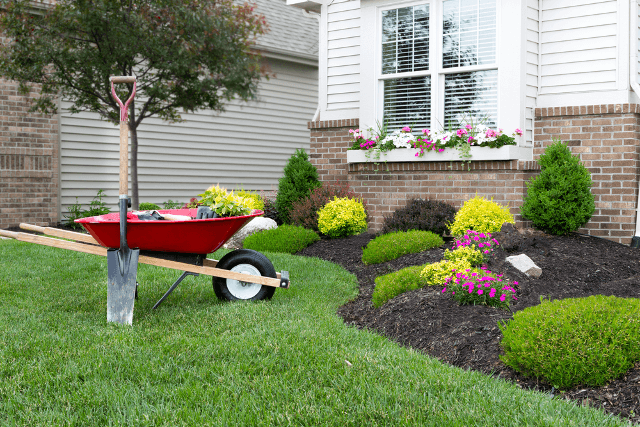When it comes to cake decorating, choosing the right cream is crucial for achieving the perfect look and taste. The kind of cream you use can make a significant difference in the outcome of your creations, whether you’re going for a classic, elegant design or a more modern, innovative approach. One common question that arises among bakers and pastry chefs is: which kind of cream is good for cake decorating?
There are several types of creams commonly used for cake decorating, each bringing its own unique characteristics to the table. From traditional buttercream to luscious whipped cream and creamy cream cheese frosting, there are various options to consider when deciding on the best fit for your cake creation. Understanding the pros and cons of each type of cream will help you make an informed decision on which one will work best for your specific needs.
In this article, we will dive into the world of cake decorating creams, exploring the different varieties available and their suitability for various decorating techniques. Whether you’re looking for a rich and decadent option like buttercream, a light and airy choice such as whipped cream, or a tangy and flavorful alternative like cream cheese frosting, we’ll guide you through the process of selecting the perfect cream to elevate your cakes to new heights.
Different Types of Cream for Cake Decorating
When it comes to cake decorating, choosing the right type of cream is essential for achieving the desired taste and texture. There are several options available, each with its own unique characteristics that can enhance the overall look and flavor of a cake. The three most popular types of cream used for cake decorating are buttercream, whipped cream, and cream cheese frosting. Each type has its own distinct qualities that make it suitable for different decoration techniques and preferences.
Here is a breakdown of the different types of cream used in cake decorating:
- Buttercream: Buttercream is a classic choice for cake decoration due to its smooth texture and ability to hold intricate designs. Made with butter, powdered sugar, and flavorings, buttercream can be easily colored and piped into various designs. It is versatile and can be used for both simple decorations and elaborate piping work.
- Whipped Cream: Whipped cream is a light and airy option for cake decorating that adds a fluffy texture to cakes. Made by whipping heavy cream with sugar until stiff peaks form, whipped cream is best suited for lighter decorations and fillings. It pairs well with fruits and can be flavored with extracts or liqueurs for added depth.
- Cream Cheese Frosting: Cream cheese frosting offers a tangy and rich flavor that complements sweet cakes perfectly. Made with cream cheese, butter, powdered sugar, and flavorings, this type of frosting has a creamy consistency that is ideal for spreading or piping onto cakes. It works well with spiced cakes like carrot or red velvet.
Each type of cream has its strengths and weaknesses when it comes to cake decorating techniques. Understanding the characteristics of each will help you choose the right one based on your specific needs and preferences. Whether you prefer the richness of buttercream, the lightness of whipped cream, or the tanginess of cream cheese frosting, selecting the perfect cream will elevate your cake decorating skills to new heights.
Pros and Cons of Using Buttercream for Cake Decorating
When it comes to cake decorating, one of the most popular choices for frosting is buttercream. This creamy and versatile option offers both pros and cons that every baker should consider when selecting the perfect cream for their cake creations.
Pros of Using Buttercream for Cake Decorating:
1. Versatility: Buttercream can be flavored in various ways, making it suitable for a wide range of cakes and desserts. From classic vanilla and chocolate to fruity flavors like raspberry or lemon, buttercream can be customized to suit any taste preference.
2. Easy to Work With: Buttercream is known for its smooth and spreadable consistency, making it ideal for creating intricate designs, borders, and piped decorations on cakes. Its pliable nature allows for easy manipulation and shaping.
3. Longevity: Cakes frosted with buttercream tend to have a longer shelf life compared to whipped cream or other dairy-based frostings. This makes it a practical choice for bakers who need their creations to last beyond a day or two.
Cons of Using Buttercream for Cake Decorating:
– Sweetness: One common drawback of buttercream is its high sugar content, which can be overpowering for some individuals with a more subtle palate.
– Temperature Sensitivity: Buttercream can become too soft or melt at high temperatures, making it less than ideal for warm environments or outdoor events.
– Need for Preparation: Making buttercream from scratch requires time and effort, including proper mixing and chilling to achieve the desired texture and consistency.
Overall, buttercream remains a popular choice among bakers due to its versatility and ease of use in cake decorating projects. However, considering its pros and cons is essential in determining if it is the best cream option for your specific needs.
Decadent Whipped Cream Options for Cake Decorating
Whipped cream is a popular choice when it comes to cake decorating, as it adds a light and airy texture with a creamy flavor. Whipped cream can be used in various ways to enhance the appearance and taste of cakes, making it a versatile option for bakers of all skill levels.
One of the advantages of using whipped cream for cake decorating is its ability to hold its shape well, which makes it perfect for creating intricate designs and borders on cakes.
One delicious variation of whipped cream is stabilized whipped cream, which includes ingredients like gelatin or cornstarch to help maintain the whipped texture for a longer period. This type of whipped cream is ideal for cakes that need to be displayed for an extended time without losing their decorative appeal. Stabilized whipped cream can also be flavored with extracts such as vanilla, almond, or citrus to add an extra layer of taste to your cakes.
Another decadent option for whipped cream in cake decorating is chocolate whipped cream. By incorporating cocoa powder or melted chocolate into the whipped mixture, you can create a rich and indulgent frosting that pairs perfectly with chocolate cake or other desserts. Chocolate whipped cream can be piped onto cakes using various piping tips to achieve different designs, making it a versatile choice for those looking to add a touch of elegance and flavor to their creations.
| Whipped Cream Variation | Key Features |
|---|---|
| Stabilized Whipped Cream | Maintains texture well, perfect for long displays |
| Chocolate Whipped Cream | Rich and indulgent flavor, great for chocolate desserts |
Creative Ways to Use Cream Cheese Frosting for Cake Decorating
Cream cheese frosting is a versatile and delicious option for cake decorating, adding a tangy and creamy flavor to your creations. Using cream cheese frosting opens up a world of creative possibilities for decorating cakes, cupcakes, and other baked goods. Whether you’re looking to add a little extra zest to a classic dessert or want to experiment with unique flavors, cream cheese frosting can be the perfect choice.
Flavor Combinations
One of the great things about using cream cheese frosting for cake decorating is the endless possibilities for flavor combinations. You can mix in different extracts like vanilla or almond to enhance the sweetness, or add in citrus zest for a refreshing twist.
For those who like bold flavors, experimenting with spices like cinnamon or nutmeg can take your cream cheese frosting to the next level. Consider incorporating fruits like raspberries or lemon juice for a burst of freshness in your decorations.
Texture and Consistency
Cream cheese frosting has a slightly denser texture compared to traditional buttercream, making it ideal for piping intricate designs on cakes. Its smooth consistency allows for easy spreading and shaping when decorating desserts. If you’re looking to create intricate piped flowers or delicate borders on your cakes, cream cheese frosting provides stability without sacrificing taste.
Pairings and Toppings
Cream cheese frosting pairs well with a variety of cake flavors, making it a versatile option for cake decorating. It complements rich chocolate cakes, tangy lemon cakes, and even spiced carrot cakes beautifully. Consider adding toppings like chopped nuts, shredded coconut, or fresh fruit on top of your cream cheese-frosted creations for added texture and visual appeal. The creamy richness of cream cheese frosting provides the perfect base for showcasing different toppings while still maintaining its decadent taste.
Vegan and Dairy-Free Options for Cream in Cake Decorating
Plant-Based Cream Alternatives
For those looking for vegan or dairy-free options for cake decorating, there are several plant-based cream alternatives that can be used. Coconut cream is a popular choice for its rich texture and subtle coconut flavor, making it a great option for tropical-themed cakes. Almond milk cream is another dairy-free alternative that provides a light and fluffy consistency, perfect for piping intricate designs on cakes.
Cashew Cream Frosting
Cashew cream frosting is another excellent option for vegans or those with dairy allergies. Made from blended cashews, this creamy topping can be flavored with vanilla extract, cocoa powder, or fruit puree to create unique and delicious frosting flavors. Cashew cream frosting is versatile and can be used to frost cakes, cupcakes, or cookies with ease.
Avoiding Lactose in Cake Decorating
For individuals who are lactose intolerant but still want to enjoy beautifully decorated cakes, there are plenty of options available. Soy-based whipped cream is an excellent lactose-free substitute that can be easily whipped up and used to decorate cakes just like traditional dairy-based whipped cream. Additionally, oat milk cream can also be used as a dairy-free alternative in cake decorating, providing a light and airy texture to frosting without the presence of lactose.
Tips for Achieving Smooth and Flawless Cream Finishes on Cakes
When it comes to cake decorating, achieving a smooth and flawless cream finish is essential for creating a professional-looking dessert. One important factor in achieving this is selecting the right kind of cream for your cake. The type of cream you choose can greatly impact the final look and taste of your creation.
Buttercream is a classic choice for cake decorating due to its versatility and stability. It is easy to work with and can be piped into a variety of designs, making it perfect for intricate decorations. However, buttercream can be on the sweeter side, which may not appeal to everyone’s taste. If you prefer a lighter option, whipped cream can provide a smooth finish with a fluffy texture that melts in your mouth.
For those who want a tangy and creamy option, cream cheese frosting is an excellent choice for cake decorating. Cream cheese adds richness and depth of flavor to your cakes while still providing a smooth finish.
It pairs well with various flavors like lemon, carrot, or red velvet cakes. Experimenting with different types of cream will help you discover which kind works best for your desired outcome – whether you prefer a rich buttercream, airy whipped cream, or tangy cream cheese frosting.
Expert Recommendations for Best Creams for Specific Cake Decorating Techniques
When it comes to cake decorating, the type of cream you use can make a significant difference in the final result. Depending on the technique you are using and the desired outcome, there are specific creams that are better suited for certain cake decorating styles.
Buttercream is one of the most versatile options and is commonly used for piping intricate designs, creating smooth finishes, and adding decorative elements to cakes. Its creamy texture and ability to hold its shape well make it a favorite among decorators.
For those looking for a lighter option, whipped cream can be an excellent choice for cake decorating. Whipped cream adds a fluffy and airy texture to cakes, making it perfect for filling layers or topping cupcakes.
It is important to note that whipped cream does not hold up as well in warm temperatures compared to buttercream, so it is ideal for desserts that will be served immediately or stored in refrigeration. Additionally, stabilized whipped cream can be prepared by adding gelatin or another stabilizer to help it maintain its shape for longer periods.
Cream cheese frosting offers a tangy and rich flavor that pairs wonderfully with certain cake flavors like red velvet or carrot cake. This type of frosting is great for spreading on cakes smoothly or creating textured finishes with different piping tips.
The slight acidity of cream cheese frosting balances out the sweetness of cakes, making it a popular choice among bakers who want a slightly less sugary option for their creations. Regardless of which kind of cream you choose for your cake decorating needs, each type brings unique qualities and flavors to enhance your baked goods.
| Cream Type | Best Used For |
|---|---|
| Buttercream | Piping intricate designs, creating smooth finishes |
| Whipped Cream | Filling layers, topping cupcakes |
| Cream Cheese Frosting | Spreading on cakes smoothly, creating textured finishes |
Conclusion
In conclusion, when it comes to choosing the perfect cream for your cake decorating needs, it is essential to consider the specific requirements of your dessert creation. Each type of cream – whether it be buttercream, whipped cream, or cream cheese frosting – offers its unique advantages and limitations. Buttercream provides a stable and versatile option for decorating intricate designs, while whipped cream adds a light and airy touch to desserts. Cream cheese frosting introduces tanginess and richness to complement different flavors.
It is crucial to experiment with these various types of creams to understand which one best suits your preferences and the style of cake you are working on. For those with dietary restrictions such as vegans or individuals avoiding dairy, there are now plenty of alternatives available that can still provide excellent results in cake decorating. From coconut whipped cream to plant-based buttercreams, there are options for everyone to create stunning cakes regardless of dietary needs.
Ultimately, the key factor in selecting the right cream for cake decorating is understanding its properties and how it will work within the context of your design. By following expert recommendations and honing your skills through practice, you can achieve smooth and flawless finishes on your cakes that will impress guests and satisfy taste buds alike.
So next time you embark on a cake decorating project, carefully consider which kind of cream is good for cake decorating based on the desired outcome and enjoy the creative process of bringing your vision to life.
Frequently Asked Questions
What Is the Best Cream to Decorate a Cake?
When it comes to decorating cakes, the best cream to use is buttercream. Buttercream is versatile, easy to work with, and holds its shape well when piped onto a cake. It also offers a smooth texture and can be easily flavored or colored to suit different themes or flavors.
Which Cream Is Used for Decorating Cake?
The most commonly used cream for decorating cakes is buttercream. Buttercream is made from butter, powdered sugar, and flavoring like vanilla extract. It is loved by bakers for its smooth consistency, ability to hold intricate designs, and delicious taste that complements a variety of cake flavors.
What Type of Cream Is Best for Cakes?
The best type of cream for cakes depends on personal preference and the desired outcome. However, buttercream is a popular choice due to its versatility in decorating techniques and flavor variations.
Other options include whipped cream for a lighter texture or cream cheese frosting for tangy sweetness that pairs well with certain cake flavors like red velvet. Ultimately, the best cream for cakes will depend on the specific needs of the baker and the desired taste and appearance of the final product.

Welcome to my blog about home and family. This blog is a place where I will share my thoughts, ideas, and experiences related to these important topics. I am a stay-at-home mom with two young children. I hope you enjoy reading it! and may find some helpful tips and ideas that will make your home and family life even better!





